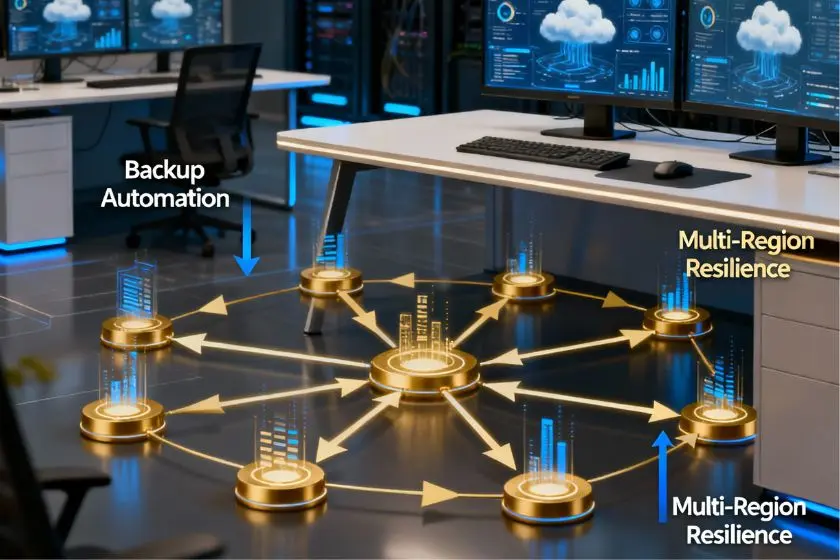AWS disaster recovery services India
Business Continuity Built-In, Not Bolted On

Being Prepared for the Unpredictable without Getting in the Way of Your Innovation. AWS backup and restore solutions
When failures do occur, every minute counts—and customer trust. Conventional disaster recovery methods always seem to entail costly, high-tech solutions that are seldom utilized and won’t be available when performance is most critical. Far too many companies are guilty of a “it won’t happen to us” mindset until it’s too late and suffer through prolonged outages, lost information, and wasted recovery expenses. AWS data recovery Delhi
We design and deploy highly available, automated disaster recovery infrastructure on AWS to your business requirements and risk tolerance. Our process is implemented to deliver the confidence that when the unthinkable occurs—it could be regional failure, security attack, or simply plain old human mistake—your business will recover quickly and keep serving customers with little or no downtime. AWS DRaaS (Disaster Recovery as a Service) India
Our Business Continuity Platform Provides Peace of Mind:
Multi-AZ and Multi-Region Architecture Design
Multi-Availability Zone and secondary AWS region tiering with cross-region VPC peering and DNS failover for fast switchover. AWS disaster recovery services India
Policy-Based Automated Backup Systems & Policies
Automated backups using AWS Backup, EBS snapshots, RDS backups and S3 versioning with data value based retention and integrity tests. AWS backup and restore solutions
Recovery Object Alignment and Testing
Establish RTO/RPO with pilot light to hot standby deployments and regular automated DR training exercises. AWS DRaaS (Disaster Recovery as a Service) India
Disaster Recovery Runbook Automation
Design and automate end-to-end recovery runbooks as AWS SSM Automation documents for consistent and traceable recovery procedures. AWS data recovery Delhi
Cyber Defense vs. Ransomware and Resilience
Air-gapped storage and immutable backups protect against ransomware and malicious deletions supported by security monitoring.
Automated Disaster Simulation Testing
Regular automated drills simulate disaster scenarios to validate recovery plans and train your teams, ensuring preparedness when real incidents occur.

When Disaster Struck, They Were Ready:
“During a regional AWS outage that affected many companies, our failover to the secondary region happened automatically. Our customers didn’t even notice the disruption. Their disaster recovery design literally saved us from six figures in potential lost revenue and immeasurable brand damage.”
– Ravi Singh, COO at LogiTrans Solutions